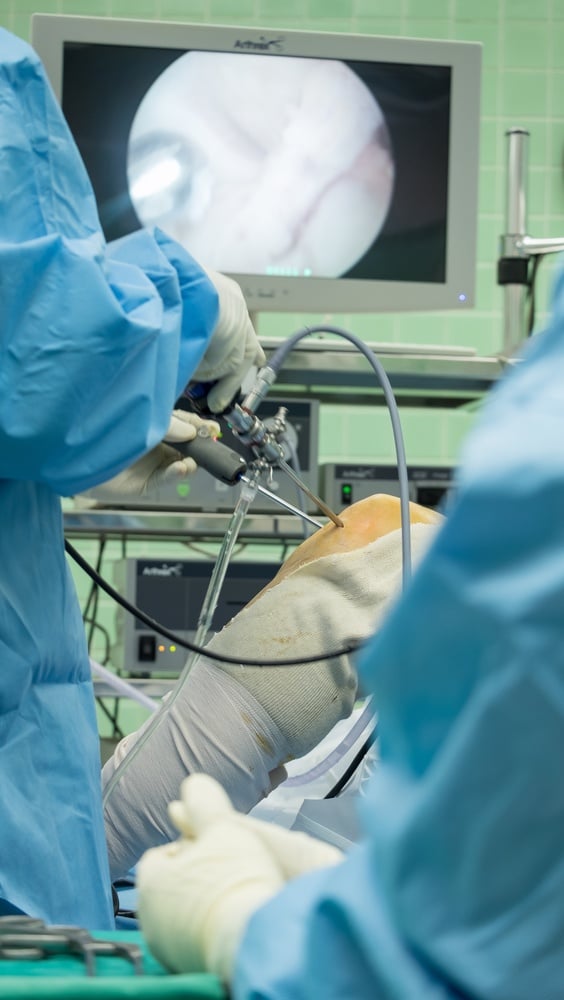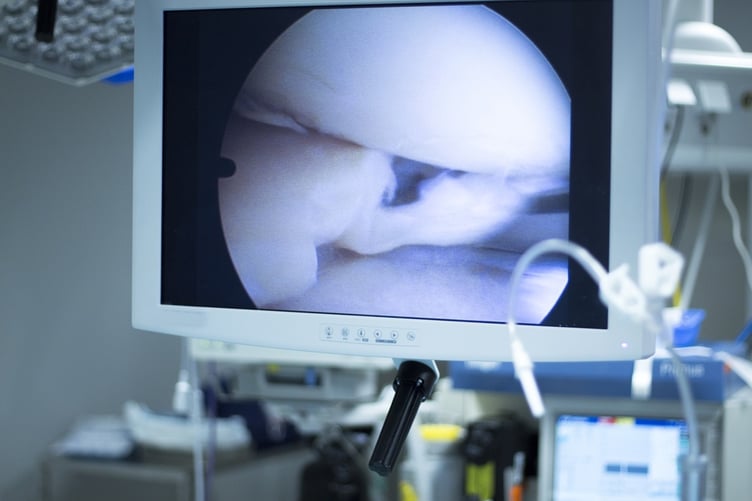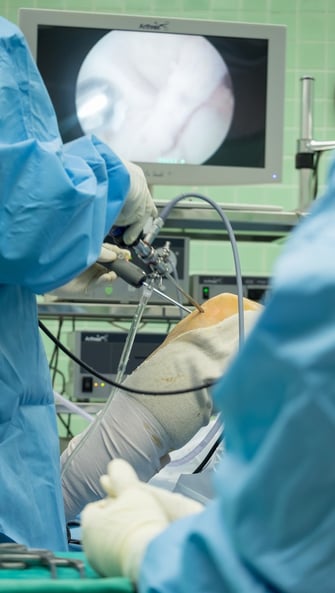Topics:
Search for topics or resources
Enter your search below and hit enter or click the search icon.
December 25th, 2019 | 3 min. read


Arthroscopic surgery, or arthroscopy, is a procedure in which a surgeon makes a small incision and views images of the joint, usually to diagnose, monitor, treat, or repair an injury or disease. Orthopedists find arthroscopy valuable because it is easier on the patient's body and requires a shorter rehabilitation time than open surgery.
Arthroscopy is the act of looking at a joint, using slim, minimally invasive instruments and cameras that allow orthopedic surgeons to examine the tissues without "opening up" the patient. In fact, the word "arthroscopy" is derived from two Greek words: arthron, which means "joint," and skopein, which means "to look at."
Originally used solely as a diagnostic tool, arthroscopy has advanced the point where orthopedists can now use it to repair joint problems as well. Arthroscopic surgery first became known to the public through its use in treating athletes' sports injuries. Now, an estimated 80% of orthopedic surgeons practice routine arthroscopic surgery on patients.
Disease and injuries can damage bones, cartilage, ligaments, muscles, and tendons. Arthroscopic exams and surgery can help to diagnose and treat these joint problems before they become bigger issues that affect mobility. Also, arthroscopic procedures tend to be shorter, and recovery times faster, than more extensive surgery.
Orthopedic surgeons use arthroscopy in many situations, including:
The joints most commonly treated with arthroscopy are the knee, shoulder, elbow, ankle, hip, and wrist. Common treatments include the repair of torn or damaged ligaments, the removal of inflamed lining (synovium), and the removal of small pieces of broken cartilage. By joint, the following are the most common surgeries:

Most arthroscopies can be done on an outpatient basis at a surgical facility. Though arthroscopy is less invasive than open surgery, local or general anesthesia may still required to minimize pain. If your procedure is a knee arthroscopy, your surgeon may inflate or infuse your knee with air or saline, which will be removed after surgery is complete.
Once you are comfortable, your orthopedic surgeon will make a small incision in your skin, close to the affected joint. Irrigation and suction may be necessary to clean debris and blood from the joint before examining it. Your surgeon will then insert an instrument about the size of a pencil.
This is the arthroscope -- a miniature television camera and lighting system that allows your surgeon to "see" inside the joint, including areas like under the kneecap. Using a television screen, the surgeon can magnify these images to help determine the type of injury you have and how to repair it, if necessary.
The surgeon may make additional incisions to insert specialized surgical instruments. In some cases, an initial exam may reveal a need for more extensive surgery, which may be performed either the same day or at a later date. In many cases, however, arthroscopic procedures take an hour or less. Most patients can leave the same day and recuperate at home.
After the surgery is complete, your surgeon will remove all surgical instruments and irrigate the joint. Your incisions will be closed with stitches and dressed with bandages. You may spend several hours in the recovery room.
Your surgeon may advise icing the joint for up to two days and taking prescription or non-prescription pain medicine as needed. Your orthopedist will schedule follow-up visits to remove sutures and inspect your incisions, and may advise a rehabilitation program.
Before you are discharged, your orthopedic surgeon will give you instructions about caring for your incisions. The surgical wound may take several days to heal. Healing time for the joint may be a few weeks to several months.
During your post-surgical recovery, you may need to avoid certain activities. Your orthopedist may suggest sports medicine or physical therapy to help recover strength and range of motion. After knee, hip, or ankle arthroscopy, walking with crutches or a brace may be necessary -- from a few days to several weeks, depending on your injury. After a shoulder, elbow, or wrist surgery, you may need to wear a sling.
If you have had a joint reconstruction or rebuild, full recovery of your joint may take up to a year. With simple arthroscopic surgeries, however, you may find you're able to return to school, work, and daily activities within a few days. Some athletes may return to sports within a few weeks.
Even if you're feeling strong and pain-free, remember to rest. Although arthroscopy is gentler on the body than open surgery, it is still a major medical procedure. Healing will take time. For the best results, be patient and follow your surgeon's instructions.
Article written by: Rob Williams, MD
Dr. Williams has been practicing orthopedic surgery in Corpus Christi since 1998. After graduating from Texas Tech hereceived his medical degree from the University of Texas at San Antonio. At the prestigious Campbell Clinic located at the University of Tennessee, Dr. Williams completed not only an Orthopedic Surgery Residency, but an additional year of Fellowship Training in Spine Surgery. Dr. Williams is dedicated to creating an excellent patient experience in the office or in the surgery suite.
Topics: